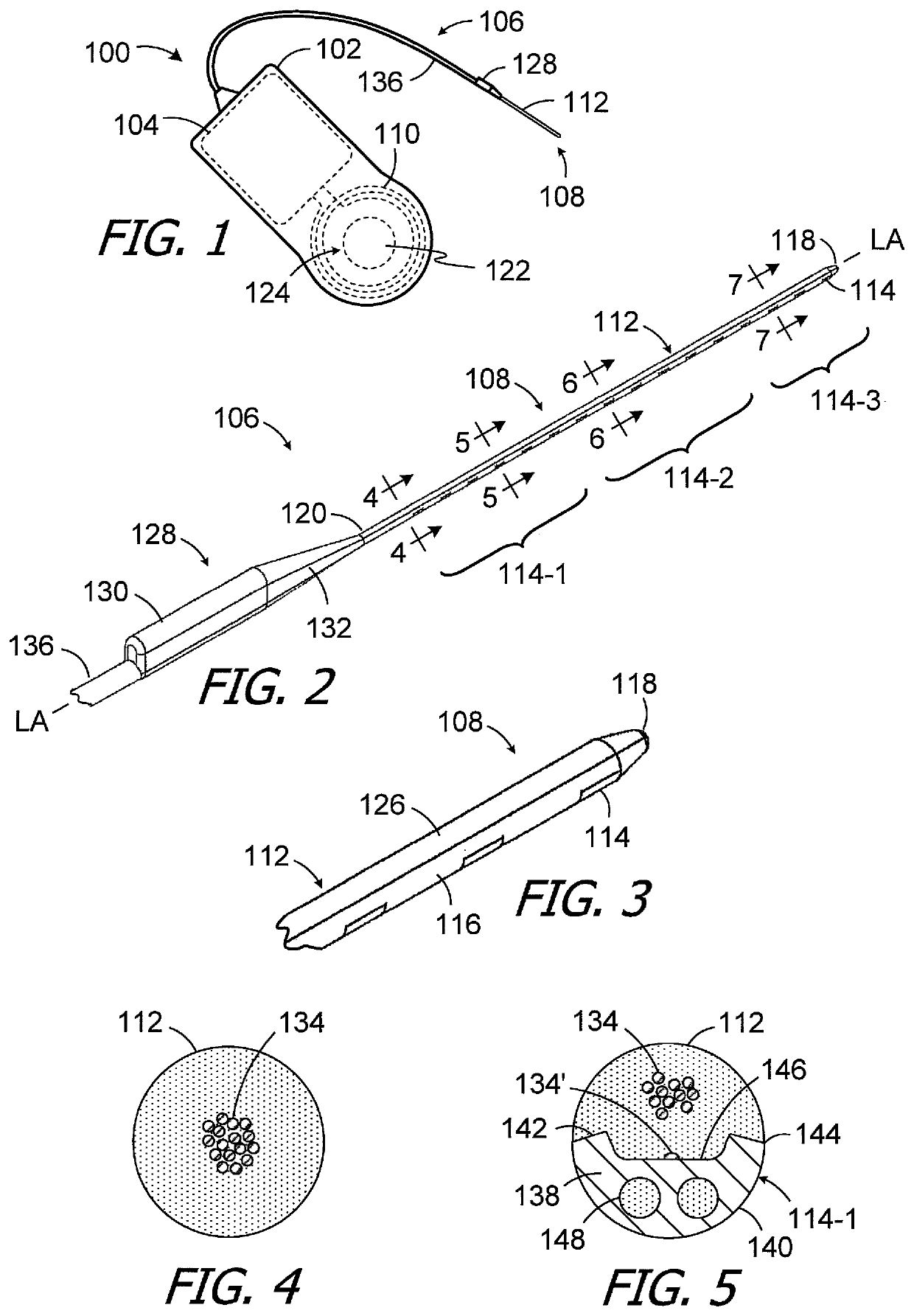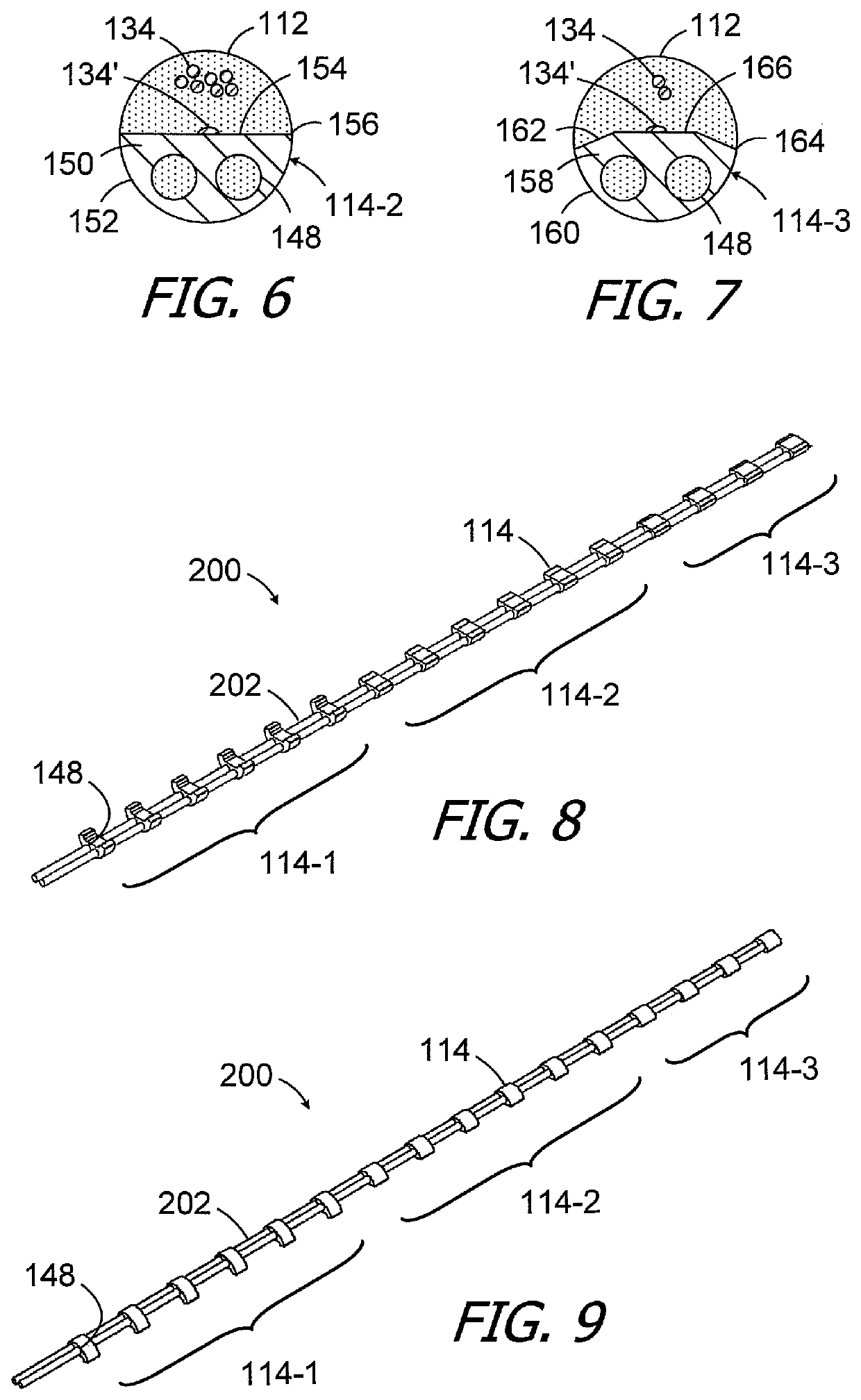Cochlear implants including electrode arrays and methods of making the same
a cochlear implant and electrode array technology, applied in the field of electrode arrays, can solve the problems of electrical impedance, damage to any still functioning hair cells, etc., and achieve the effect of reducing the likelihood of lead wire breakag
- Summary
- Abstract
- Description
- Claims
- Application Information
AI Technical Summary
Benefits of technology
Problems solved by technology
Method used
Image
Examples
Embodiment Construction
[0107]The following is a detailed description of the best presently known modes of carrying out the inventions. This description is not to be taken in a limiting sense, but is made merely for the purpose of illustrating the general principles of the inventions.
[0108]One example of a cochlear implant (or “implantable cochlear stimulator”) in accordance with at least some of the present inventions is illustrated in FIGS. 1-7. The cochlear implant 100 includes a flexible housing 102 formed from a silicone elastomer or other suitable material, a processor assembly 104, a cochlear lead 106 with an electrode array 108, and an antenna 110 that may be used to receive data and power by way of an external antenna that is associated with, for example, a sound processor unit. The electrode array 108 includes a flexible body 112 and a plurality of electrically conductive contacts 114 (e.g., the sixteen contacts 114 illustrated in FIG. 2) spaced along the curved bottom surface 116 of the flexible...
PUM
 Login to View More
Login to View More Abstract
Description
Claims
Application Information
 Login to View More
Login to View More - R&D
- Intellectual Property
- Life Sciences
- Materials
- Tech Scout
- Unparalleled Data Quality
- Higher Quality Content
- 60% Fewer Hallucinations
Browse by: Latest US Patents, China's latest patents, Technical Efficacy Thesaurus, Application Domain, Technology Topic, Popular Technical Reports.
© 2025 PatSnap. All rights reserved.Legal|Privacy policy|Modern Slavery Act Transparency Statement|Sitemap|About US| Contact US: help@patsnap.com



